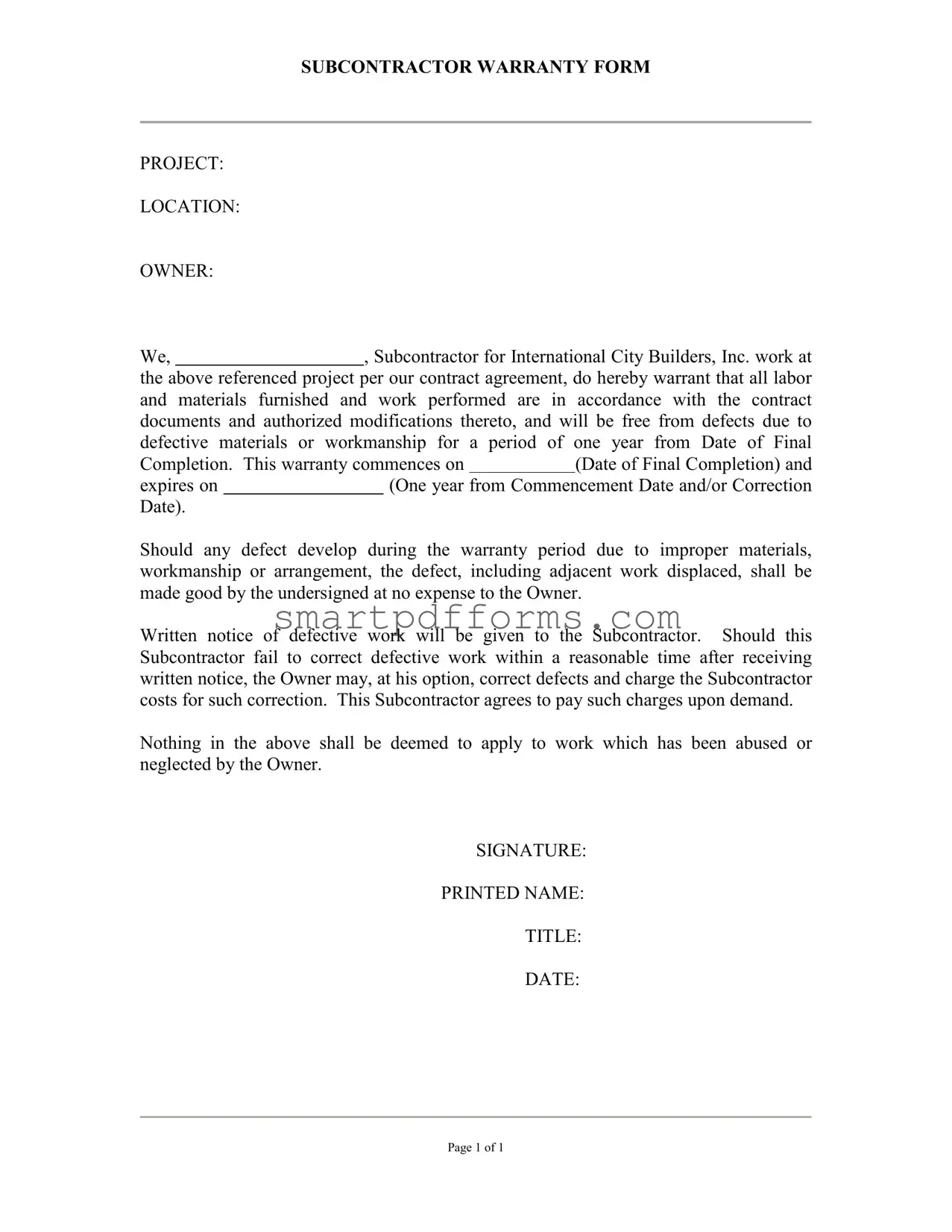SUBCONTRACTOR WARRANTY FORM
PROJECT:
LOCATION:
OWNER:
We,, Subcontractor for International City Builders, Inc. work at
the above referenced project per our contract agreement, do hereby warrant that all labor and materials furnished and work performed are in accordance with the contract documents and authorized modifications thereto, and will be free from defects due to defective materials or workmanship for a period of one year from Date of Final
Completion. |
This warranty commences on |
|
(Date of Final Completion) and |
expires on |
|
|
(One year from Commencement Date and/or Correction |
Date). |
|
|
|
|
Should any defect develop during the warranty period due to improper materials, workmanship or arrangement, the defect, including adjacent work displaced, shall be made good by the undersigned at no expense to the Owner.
Written notice of defective work will be given to the Subcontractor. Should this Subcontractor fail to correct defective work within a reasonable time after receiving written notice, the Owner may, at his option, correct defects and charge the Subcontractor costs for such correction. This Subcontractor agrees to pay such charges upon demand.
Nothing in the above shall be deemed to apply to work which has been abused or neglected by the Owner.
SIGNATURE:
PRINTED NAME:
TITLE:
DATE:
Page 1 of 1

